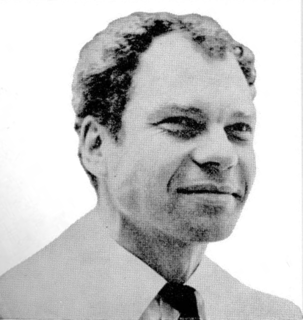
Mercier Philip "Merce" Cunningham was an American dancer and choreographer who was at the forefront of American modern dance for more than 50 years. He was notable for frequent collaboration with artists of other disciplines, including musicians John Cage, David Tudor, Brian Eno, and graphic artists Robert Rauschenberg, Bruce Nauman, Andy Warhol, Roy Lichtenstein, Frank Stella, and Jasper Johns; and fashion designer Rei Kawakubo. Works that he produced with these artists had a profound impact on avant-garde art beyond the world of dance.

Contemporary dance is a genre of dance performance that developed during the mid-twentieth century and has since grown to become one of the dominant genres for formally trained dancers throughout the world, with particularly strong popularity in the U.S. and Europe. Although originally informed by and borrowing from classical, modern, and jazz styles, it has since come to incorporate elements from many styles of dance. Due to its technical similarities, it is often perceived to be closely related to modern dance, ballet, and other classical concert dance styles.
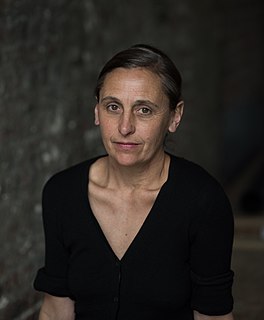
Anne Teresa, Baroness De Keersmaeker is a contemporary dance choreographer. The dance company constructed around her, Rosas, was in residence at La Monnaie in Brussels from 1992 to 2007.

Aerial modern dance is a subgenre of modern dance first recognized in the United States in the 1970s. The choreography incorporates an apparatus that is often attached to the ceiling, allowing performers to explore space in three dimensions. The ability to incorporate vertical, as well as horizontal movement paths, allows for innovations in choreography and movement.
Susan Marshall is an American choreographer and the Artistic Director of Susan Marshall & Company. She has held the position of Director of the Program in Dance at Princeton University since 2009.

Ballet is a formalized form of dance with its origins in the Italian Renaissance courts of 15th and 16th centuries. Ballet spread from Italy to France with the help of Catherine de' Medici, where ballet developed even further under her aristocratic influence. An early example of Catherine's development of ballet is through 'Le Paradis d' Amour', a piece of work presented at her daughter's wedding, Marguerite de Valois to Henry of Navarre. Aristocratic money was responsible for the initial stages of development in 'court ballet', as it was royal money that dictated the ideas, literature and music used in ballets that were created to primarily entertain the aristocrats of the time. The first formal 'court ballet' ever recognized was staged in 1573, 'Ballet des Polonais'. In true form of royal entertainment, 'Ballet des Polonais' was commissioned by Catherine de' Medici to honor the Polish ambassadors who were visiting Paris upon the accession of Henry of Anjou to the throne of Poland. In 1581, Catherine de' Medici commissioned another court ballet, Ballet Comique de la Reine, however it was her compatriot, Balthasar de Beaujoyeulx, who organized the ballet. Catherine de' Medici and Balthasar de Beaujoyeulx were responsible for presenting the first court ballet ever to apply the principles of Baif's Academie, by integrating poetry, dance, music and set design to convey a unified dramatic storyline. Moreover, the early organization and development of 'court ballet' was funded by, influenced by and produced by the aristocrats of the time, fulfilling both their personal entertainment and political propaganda needs.
Ann Carlson is an American dancer, choreographer and performance artist whose work explores contemporary social issues. She has performed throughout the United States and internationally and has won a number of awards.
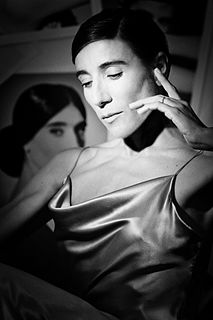
Blanca Li, originally Blanca María Gutiérrez Ortiz is a choreographer, film director, dancer and actress.
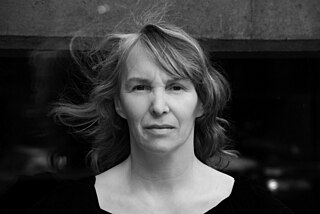
Louise Bédard is a Canadian dancer, choreographer and teacher who is active on the contemporary dance.
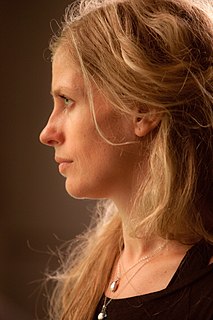
Crystal Pite is a Canadian choreographer and dancer. She began her professional dance career in 1988 at Ballet BC and in 1996 she joined Ballett Frankfurt under the tutelage of William Forsythe. After leaving Ballett Frankfurt she became the resident choreographer of Montreal company Les Ballets Jazz de Montreal from 2001-2004. She then returned to Vancouver where she focused on choreographing while continuing to dance in her own pieces until 2010. In 2002 she formed her own company called Kidd Pivot, which produced her original works Uncollected Work (2003), Double Story (2004), Lost Action (2006), Dark Matters (2009), The You Show (2010), The Tempest Replica (2011), Betroffenheit (2015), and Revisor (2019) to date. Throughout her career she has been commissioned by many international dance companies to create new pieces, including The Second Person (2007) for Netherlands Dans Theater and Emergence (2009) for the National Ballet of Canada, the latter of which was awarded four Dora Mavor Moore Awards.

Édouard Lock is a Canadian dance choreographer and the founder of the Canadian dance group, La La La Human Steps.
Thomas Hauert is a Swiss dancer and choreographer, leader of the Brussels-based company ZOO/Thomas Hauert.

Jérôme Bel is a French dancer and choreographer, whose characteristic choreographic style is known as non-dance, typified by his 2001 piece The Show Must Go On.

Wilfride Piollet was a French ballerina and choreographer. She was born in Saint-Rambert-d'Albon. Her philosophy of dance and her research led to the publication of several books. Piollet joined the Paris Opera Ballet company in 1960. She gained the rank "coryphée" in 1963, "sujet" in 1964, soloist in 1966, and was promoted to principal dancer (étoile) in 1969. In 1973, Nouvelle lune c-à-d was created for her retirement of the Paris Opera. Invited as a guest by Rudolf Nureyev, she danced at the Paris Opera until 1990, the year when Jean Guizerix left. At the Paris Opera and worldwide, she performed the classical, neo-classical and contemporary repertory, and from the 1980s, the Baroque and Renaissance ones. She ended her dance career in 2003 with a piece on Isadora Duncan's dances studied with Madeleine Lytton, and performed with Jean Guizerix.
Annie-B Parson is an American choreographer, dancer, and director based in Brooklyn, New York. Parson is notable for her work in dance/theater, post-modern dance, and art popmusic. Parson is the Artistic Director of Brooklyn's Big Dance Theater, which she founded with Molly Hickok and her husband, Paul Lazar. She is also well known for her collaborations with Mikhail Baryshnikov, David Byrne, David Bowie, St. Vincent, Laurie Anderson, Jonathan Demme, Ivo van Hove, Sarah Ruhl, Lucas Hnath, Wendy Whelan, David Lang, Esperanza Spalding, Mark Dion, Salt ‘n Pepa, Nico Muhly, and the Martha Graham Dance Co.
José Montalvo is a prominent French dancer and choreographer. A 2001 winner of the Laurence Olivier Award for Best Dance Production, his work has been performed in Europe, America and Asia.
Danses concertantes is the title of more than a dozen ballets set to the score of the same title for chamber orchestra written in 1941–42 by Igor Stravinsky. Commissioned by Werner Janssen, it has been used for ballets by numerous choreographers attracted by its undeniable danceability.
Karl Wilhelm Alexander Ekman is a Swedish ballet dancer and choreographer. His choreographies have been performed by Les Ballets de Monte Carlo, the Boston Ballet, the Dresden Semperoper Ballett, the Nederlands Dans Theater, the Norwegian National Ballet, the Royal Swedish Ballet, the São Paulo City Ballet, the Sydney Dance Company and the Wiener Staatsballett. For some of them he has designed sets and costumes or composed the music.
Damien Jalet is a Belgo-French freelance choreographer, dancer and performer working internationally. His work is often collaborative, creating intricate bounds between dance and other artistic media such as visual art, fashion, theater and music.

María José Ribot, known as La Ribot, is a dancer, choreographer and visual artist. Her projects are based on movement, the body and her own experiences in dance, but she also uses other practices, systems and materials that her concepts generate. She is the main interpreter of her works while she also often creates the costumes, objects and scenery. With more than 45 works under her belt, including choreographies, installations and videos, La Ribot continues to find interest in living art, in the human body and its capacity for poetic, subversive and political expression. She has received the 2000 National Dance Award and the Gold Medal for Merit in Fine Arts 2016 – both granted by the Ministry of Culture of Spain – and the Culture Award of the Community of Madrid in Visual Arts 2018. In September 2019, she received the Swiss Grand Award for Dance granted by the Swiss Confederation in recognition of her artistic work.